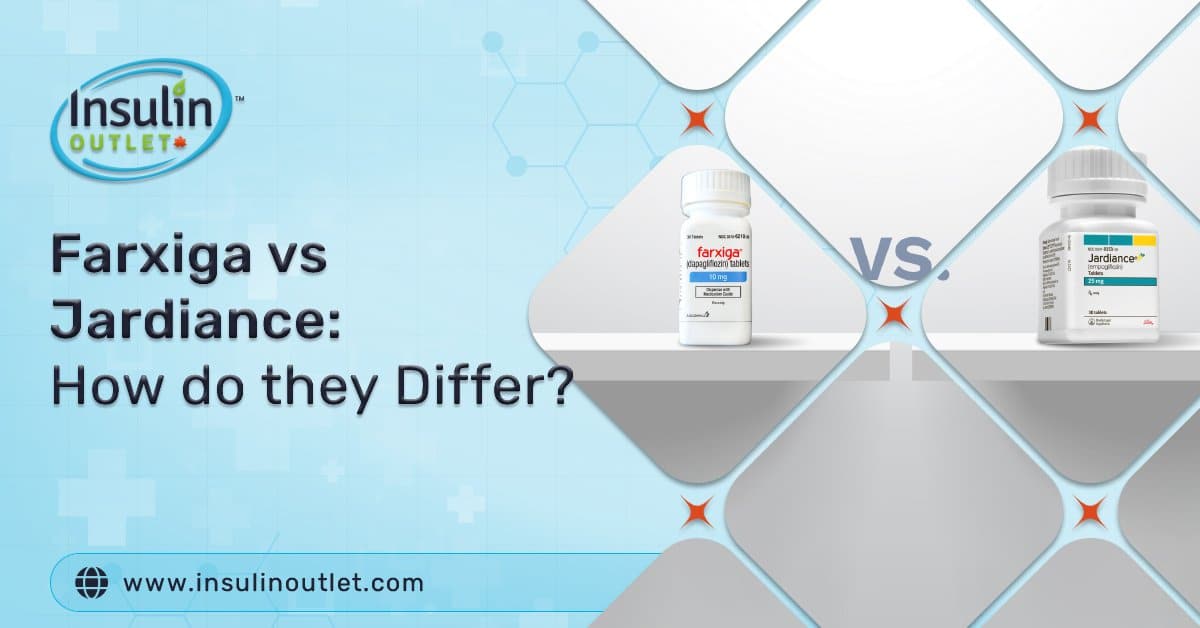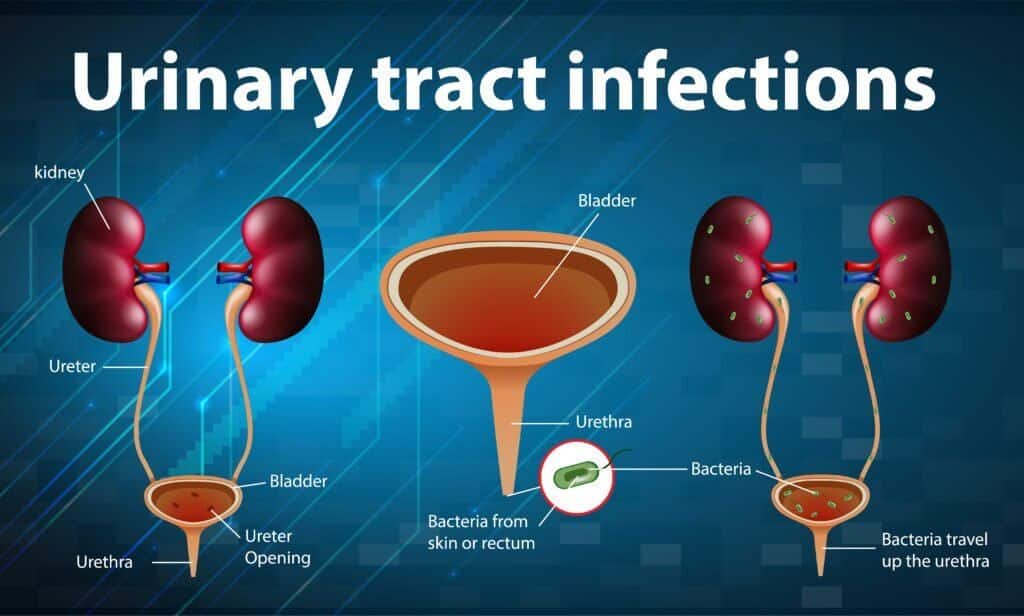
Pharmacy companies are always trying to find newer blood sugar-lowering medications that work differently than insulin. Two of the latest drugs are Farxiga and Jardiance.
Diabetes is a medical condition that is increasing every day. Just in the US alone, 10% of the population is diagnosed with diabetes, of which 90% have type 2 diabetes. As mentioned in previous posts, diabetes can come in different forms (type 1, type 2, gestational) and is handled differently from person to person. Some can manage their diabetes without medication, while others cannot.
Farxiga and Jardiance are a newer class of drugs used to treat adult patients with type 2 diabetes. Unlike traditional diabetes medication that uses synthetic insulin to manage blood sugar levels, these medications use SGLT 2 Inhibitors as an active ingredient. Farxiga and Jardiance help to regulate blood glucose levels, but because type 2 diabetes is also closely associated with heart disease, doctors also prescribe them to reduce the risk of complications from heart disease.
Both Farxiga and Jardiance are brand-name drugs for dapagliflozin and empagliflozin, respectively. However, there isn’t a generic version of either medication available on the market.
Table Of Contents
ToggleWhat are SGLT 2 Inhibitors?
Sodium-glucose cotransporter-2 inhibitors (or SGLT-2 for short) are a class of medications used to lower high blood sugar levels in people with type 2 diabetes. Instead of providing you a quick boost of insulin-like traditional treatment, SGLT 2 inhibitors curb the action of a protein that helps your kidneys reabsorb sugar from your blood. After taking SGLT 2 inhibitors, lower amounts of blood sugar enter your kidneys, and the excess leaves your body through urine.
SGLT 2 inhibitors have been related to DPP-4 inhibitors (such as Januvia). However, SGLT 2 inhibitors are considered weight negative, while Januvia is weight neutral.
What is Farxiga?
Farxiga is an oral medication approved by the FDA in 2014. it has a half-life of 12.9 hours and is used in conjunction with diet and exercise to help people with type 2 diabetes control their blood glucose levels. The medication is frequently prescribed with other drugs and is usually taken with or without food in the morning.
Farxiga works in the body by helping the kidneys block the reabsorption of sugar in the bloodstream and getting rid of the excess glucose, by excreting it through the urinary tract. This consequently helps in heart contractions and relaxation.
The medication has been shown to reduce the risk of kidney-related diseases, such as Glomerulonephritis, and has also helped patients with chronic kidney disease that often occurs in patients with type 2 diabetes. Farxiga can also help you lose weight and is shown to decrease the body’s A1C percentage. However, Farxiga’s weight-loss functionality has been approved by the FDA, unlike Trulicity.
Additionally, it may be used to decrease the risk of renal function deterioration, end-stage kidney disease, and cardiovascular or renal death in individuals with chronic kidney disease (CVD).
Farxiga is also used to treat heart failure and reduce the risk of hospitalization and death from heart disease. It is also prescribed to patients who have heart complications but don’t necessarily have type 2 diabetes.
Side Effects and Risk Factors Associated with Taking Farxiga
Even though Farxiga has been shown to work efficiently in patients with type 2 diabetes, it comes with a range of adverse side effects that should be kept in mind before taking the medication. Listed below are the possible side effects and the percentage of patients suffering from those side effects when medicated with Farxiga.
- Common cold symptoms (7%)
- Urinary tract infection (6%)
- Increase urination (3%)
- Flu (3%)
- Mild low blood sugar (2%)
- Discomfort with urination (2%)
- Constipation (2%)
- High cholesterol (2%)
- Kidney problems
- Allergic reactions
- Difficulty breathing

Other than unpleasant side effects, Farxiga also puts you at an increased risk of general yeast infections, increased acid and ketones in the blood and kidney damage.
Farxiga is not recommended for pregnant women as it increases the risk of miscarriage and defects. The drug also isn’t recommended for breastfeeding women as it can potentially be excreted into the milk.
Drug and Disease Interactions Associated with Farxiga
Farxiga is known to interact with a total of 352 drugs, with 325 of them being moderate interactions while 26 of them being minor interactions. It also has the potential to interact with alcohol and affect blood sugar levels in patients with diabetes.
The drug also has major interactions with liver dysfunction and renal dysfunction. It also has moderate interactions with hypotension and infections.
Due to the high number of possible drug interactions, it is necessary to consult your physician and learn more about this drug before starting usage. Be sure to include your full medical history, as well as any other medications for diabetes you are taking, such as insulin or thiazolidinediones.
What is Jardiance?
Jardiance is an oral medication for patients with type 2 diabetes. It has a half-life of 12.4 hours and is taken daily in the morning, usually in pill form. The FDA approved it in 2014 to treat type 2 diabetes, and since then, it has also worked efficiently for patients with heart disease. Since the drug was shown to decrease the risk of heart complications and cardiovascular death, the FDA approved it in 2016 for patients with heart disease.
A three-year clinical study found that taking Jardiance lowers the risk of suffering from cardiac arrest by 38% in patients with type 2 diabetes and heart disease.
The medication works by aiding the kidneys to get rid of surplus glucose in the bloodstream through urine, in turn lowering the body’s A1C percentage by about 0.8 percentage points over 24 weeks, which is a measure of average blood sugar over time. It has also been shown to aid in losing weight, although many people do not take Jardiance strictly to lose weight (unlike Ozempic).
The drug may begin assisting in the reduction of blood sugar levels within 1 to 2 weeks. However, clinical studies indicate that it may take up to 24 weeks for a person to experience all of Jardiance’s benefits.
Doctors often prescribe Jardiance to patients with type 2 diabetes with a combination of healthy dietary changes and regular physical activity.
Side Effects and Risks Associated with Taking Jardiance
There are various side effects that taking Jardiance could have.
As with any drug, Jardiance comes with its affiliated risks and side effects that should be considered before taking the medication.
Listed below are the possible side effects and the percentage of patients suffering from those side effects when medicated with Jardiance.

- Low blood sugar (40%)
- Urinary tract infection (9%)
- Elevate cholesterol levels (4%)
- Increased urination (3%)
- Joint pain (2%)
- Nausea (2%)
- Yeast infection in men (3%)
- Yeast infection in women (5%)
- Kidney problems
- Allergic reactions
- Difficulty breathing
Jardiance also puts you at an increased risk of deteriorating kidney function and increased acidity in the blood.
Jardine is not recommended for pregnant or breastfeeding women as the drug may be excreted in the milk and cause complications for the infant.
Drug and Disease Interactions Associated with Jardiance
Jardiance is known to interact with a total of 389 drugs, with 364 of them being moderate interactions while 21 of them being minor interactions. It also has the potential to interact with alcohol and affect blood sugar levels in patients with diabetes.
The drug also has major interactions with one renal dysfunction, hypotension and infections.
Due to the high number of possible interactions, it is necessary to consult your physician and learn more about this drug before starting the treatment.
Similarities Between Farxiga and Jardiance
Both Jardiance and Farxiga belong to the same class of drugs called SGLT 2 inhibitors. They both work similarly to lower blood sugar levels and help the kidneys eliminate excess sugar by excreting through the urine.
The increased urination caused by both drugs has been associated with a higher risk of urinary tract infections and genital infections.
Farxiga and Jardiance also appear to aid in cardiovascular function and decrease the risk of heart complications and heart attack. Those two medications are not recommended for people with type 1 diabetes but may be prescribed to patients with heart problems regardless of whether they have type 2 diabetes.
Differences Between Farxiga and Jardiance
Farxiga and Jardiance have slightly different molecular structures (C21H25ClO6 vs. C23H27ClO7), which means they have similar but still distinct effects on the body. Farxiga has a slightly longer half-life than Jardiance (12.9 hours vs. 12.4 hours), which means it may remain in the body slightly longer than Jardiance. Additionally, Farxiga is not recommended for patients with active bladder cancer.
Farxiga is available in tablets of 5mg and 10mg, with 30 tablets for oral use costing around $530, whereas Jardiance is available in tablets of 10 mg and 20 mg, with 30 tablets costing around $550. However, you can find Farxiga for $82.53 and Jardiance for $113 through Insulin Outlet!
Which Medication Works Best?
It is very common to ask which one of the two drugs is better for you to use. There isn’t one objective answer to this as both drugs work very similarly and come with their own share of possible side effects.
It is important for patients to understand that everyone is different, and what works best for one patient would not necessarily work for the other.
It is possible to switch between the two drugs if you have started using one and aren’t satisfied with it; however, your doctor might advise against doing so.
This is why it is necessary for you to work with a licensed healthcare professional, who will perform a review of your medical conditions and weigh the pros and cons of each medication to decide which one you should start taking.
Farxiga vs Jardiance FAQs
What are Farxiga and Jardiance used for?
Both Farxiga (dapagliflozin) and Jardiance (empagliflozin) are used to lower blood sugars in adults with type 2 diabetes. They are often prescribed as part of a comprehensive treatment plan that includes diet and exercise.
How do Farxiga and Jardiance work?
Farxiga and Jardiance work by inhibiting the SGLT2 protein in the kidneys. This prevents the reabsorption of glucose and allows excess glucose to be excreted in the urine, thus lowering blood sugar levels.
Are there differences between dosing Farxiga and Jardiance?
The dosing of Farxiga and Jardiance may vary, and it’s essential to follow your healthcare provider’s instructions. However, both medications are typically taken once a day.
Do they interact with other medications?
Both medications may interact with certain drugs, so it’s crucial to inform your healthcare provider about all the medications you are taking, including over-the-counter and herbal supplements. They can advise you on potential interactions and contraindications.
Are they safe for all patients with type 2 diabetes?
Farxiga and Jardiance are generally considered safe and effective for many type 2 diabetes patients. However, they may not be suitable for everyone, so it’s essential to consult with a healthcare provider to determine the best treatment plan based on your individual health profile.
Can either Farxiga or Jardiance be used for weight loss?
Farxiga and Jardiance are not approved specifically for weight loss – they are diabetes treatment options, and their primary purpose is to control blood sugar levels in diabetic patients. While they are primarily prescribed to manage blood sugars in individuals with type 2 diabetes, some people may experience weight loss as a side effect. If you are seeking a medication or strategy for losing weight, it’s advisable to consult with a healthcare provider who can recommend appropriate options tailored to your weight management goals.
Share:














